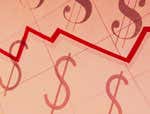If you don’t believe in the efficient market hypothesis, you can identify reasons why stocks might be trading below their intrinsic value. Here are a few factors that can drag a stock’s price down (or to push it up beyond what it should be).
Market Momentum and Herd Mentality
People invest irrationally based on psychological biases rather than market fundamentals. When a specific stock’s price is rising or when the overall market is rising, they buy. They see that if they had invested 12 weeks ago, they could have earned 15% by now, and they don’t want to miss out on potential future gains of the same magnitude. They hear other people bragging about their paper profits and they want in.
When a specific stock’s price is declining or when the overall market is declining, loss aversion compels people to sell their stocks. They don’t want to lose everything, and they fear uncertainty. So instead of keeping their losses on paper and waiting for the market to change directions, they accept a certain loss by selling. Such investor behavior is so widespread that it affects the prices of individual stocks, exacerbating downward market movements. Such behavior also has a dramatic, negative effect on the portfolio returns of people who invest this way. (Learn more in Understanding Investor Behavior.)
Bubbles and Market Crashes
When market momentum and the herd mentality run to extremes, bubbles and crashes result. The early 2000s tech bubble and the mid-2000s housing bubble were fueled by overinvestment that bid up the prices of tech stocks and real estate beyond what the underlying companies and properties were worth. When the unsustainable highs began to fall, investors panicked and a crash ensued, causing some stocks to be priced closer to their true values and others to fall below their true values. (Bubbles are deceptive and unpredictable, but by studying their history we can prepare to our best ability. Check out Economic Bubble: Toil and Trouble! and Industries Prone to Bubbles.)
Unnoticed Stocks
Stocks might sell for less than they’re worth because they’re under the radar. Small cap stocks, foreign stocks, and any other stocks that aren’t in the headlines or aren’t household names sometimes offer great potential but don’t get the attention they deserve.
Unglamorous Stocks
Everyone wants to invest in the next big thing or even the current big thing. Not only do investors think they can make a fortune this way, but it’s a lot more exciting to say you became a millionaire by purchasing shares of a technology startup than by purchasing shares of an established consumer durables manufacturer. Media darlings like Facebook, Apple and Google are more likely to be affected by herd mentality investing than conglomerates like Proctor and Gamble or Johnson and Johnson. The chart below shows some unglamorous companies that investors have considered to be value stocks at some point during 2017.
|
Unglamorous Value Stocks in 2017 |
||
|
Company name |
Ticker |
What the company does |
|
Aceto Corporation |
ACET |
Worldwide sales, marketing, sale and distribution of human health products, pharmaceutical ingredients and performance chemicals. |
|
BG Staffing Inc. |
BGSF |
Temporary employee provider for US companies in various industries. |
|
Cintas Corporation |
CTAS |
Designs, manufactures and implements corporate identity uniforms for North American businesses. |
|
Party City Holdco Inc. |
PRTY |
North American party goods and Halloween specialty retailer that designs, manufactures and distributes party goods. |
Bad News
Even good companies face setbacks such as litigation and recalls. However, just because a company experiences one negative event doesn’t mean that the company isn’t still fundamentally valuable or that its stock won’t bounce back. Companies with real value can experience a significant drop in share price when something bad happens. Investors often overreact to the magnitude of the information, opening up buying opportunities for value investors who strictly follow fundamental principles. Those who are willing to consider the company’s long-term value and ability to recover can turn these setbacks into profit opportunities. (See How Do Recalls Affect A Company?)
Underperforming Divisions
Sometimes a company has an unprofitable division that drags down its performance. If the company sells or closes that division, the company’s financials can improve dramatically. Value investors who see this potential can buy the stock while its price is depressed and enjoy gains later.
Failure to Meet Analysts’ Expectations
Analysts do not have a great track record for predicting the future, and yet investors often panic and sell when a company announces earnings that are lower than analysts’ expectations. This irrational behavior can temporarily depress a stock’s price. (See Earnings Forecasts: A Primer.)
Cyclicality
It’s common for companies to go through periods of higher and lower profits. The time of year and the overall economy affect consumers’ moods and cause them to buy more or less. Their behavior might affect the stock’s price, but it has nothing to do with the company’s long term underlying value. (See The Ups and Downs of Investing in Cyclical Stocks.)
For these and other reasons, stock prices can become depressed even as the company continues to create value for its shareholders. Such situations present profit opportunities for value investors.
In the next section, we’ll talk about how to find undervalued stocks.
Value Investing: Finding Undervalued Stocks
-
 Investing
InvestingEconomic Bubble: Toil And Trouble!
You might like the idea of profiting from a bubble, but you’d probably like to avoid suffering from its aftermath. Here is how an economic bubble works. -
 Insights
Insights5 Ways To Spot The Next Stock Bubble - And Avoid It
Playing a market bubble could pay off, but it carries a lot of risk. Avoiding it could be the way to stay profitable. -
 Insights
InsightsSome Industries Are More Bubbly Than Others
Investors who want to avoid future bubbles should learn from the past in order to protect their investments. -
 Insights
InsightsHow Do Asset Bubbles Cause Recessions?
Understand how asset bubbles often lead to deep, protracted recessions. Read about historical examples of recessions preceded by asset bubbles. -
 Insights
InsightsFive Of The Largest Asset Bubbles In History
The five bubbles discussed here were among the biggest in history; their lessons should be heeded. -
 Investing
InvestingInvesting During Market Bubbles and Bursts
Don’t fear bubbles and don’t avoid certain markets because some people believe they may burst. -
 Investing
InvestingAn Introduction to Behavioral Finance
Curious about how emotions and biases affect the market? Find some useful insight here.



